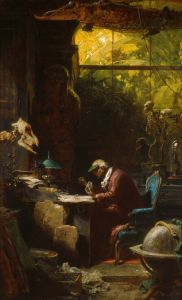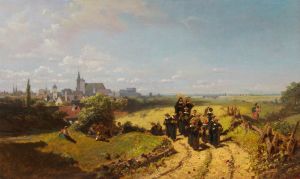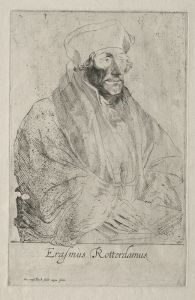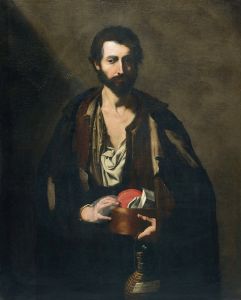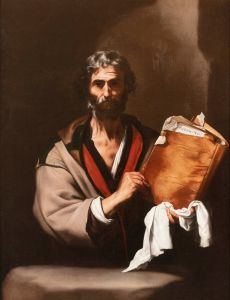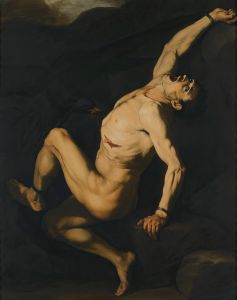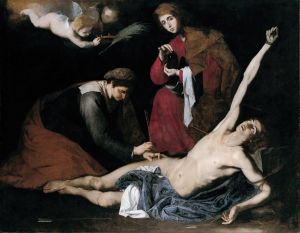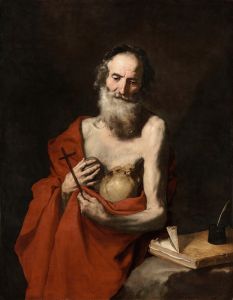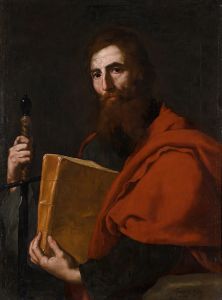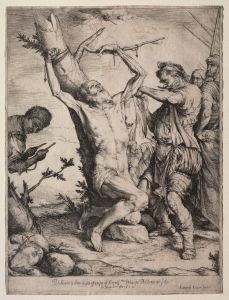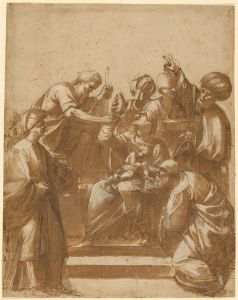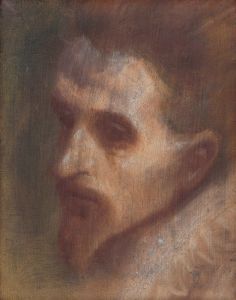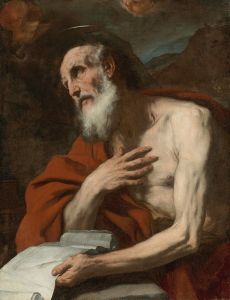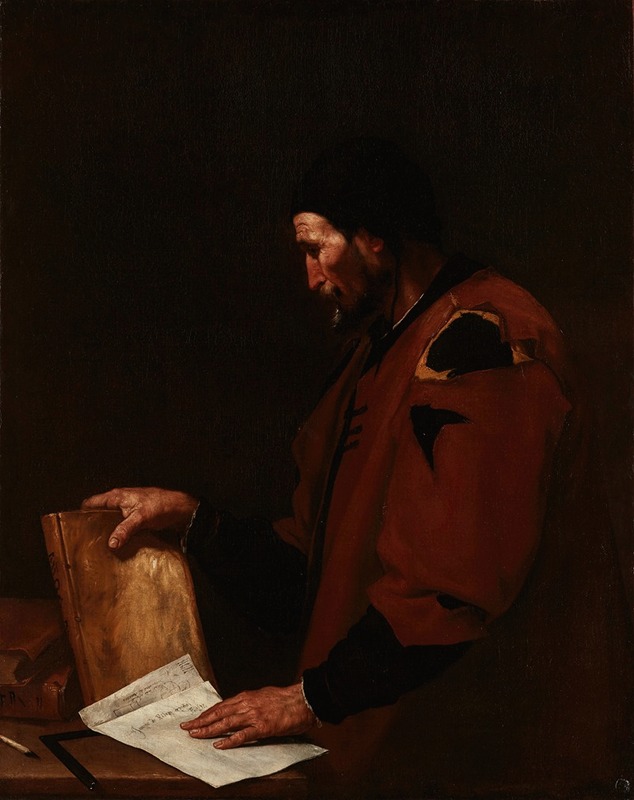
A Philosopher, probably Euclid
A hand-painted replica of Jusepe de Ribera’s masterpiece A Philosopher, probably Euclid, meticulously crafted by professional artists to capture the true essence of the original. Each piece is created with museum-quality canvas and rare mineral pigments, carefully painted by experienced artists with delicate brushstrokes and rich, layered colors to perfectly recreate the texture of the original artwork. Unlike machine-printed reproductions, this hand-painted version brings the painting to life, infused with the artist’s emotions and skill in every stroke. Whether for personal collection or home decoration, it instantly elevates the artistic atmosphere of any space.
"A Philosopher, probably Euclid" is a painting by the Spanish artist Jusepe de Ribera, created in the early 17th century. Ribera, who was active during the Baroque period, is renowned for his dramatic use of chiaroscuro and his realistic portrayal of human figures. This painting is part of a series of portraits depicting ancient philosophers, a common theme in Ribera's work, reflecting the period's renewed interest in classical antiquity and the humanist ideals of the Renaissance.
The painting is executed in oil on canvas and is notable for its intense realism and the psychological depth of its subject. Ribera's skillful use of light and shadow highlights the philosopher's contemplative expression and the textures of his skin and clothing. The philosopher is depicted as an elderly man with a long beard, wearing a simple robe, which was typical of Ribera's portrayal of philosophers as humble and wise figures. The background is dark and unadorned, drawing the viewer's focus entirely to the figure.
While the painting is traditionally titled "A Philosopher, probably Euclid," there is no definitive evidence that the subject is indeed Euclid, the ancient Greek mathematician known for his work in geometry. The identification is speculative and based on the iconographic tradition of associating certain attributes with specific philosophers. In this case, the presence of a compass or other mathematical instruments, which are not visible in the painting, would typically suggest Euclid. However, without such attributes, the identification remains uncertain.
Ribera's series of philosopher portraits was likely influenced by the intellectual climate of his time, which saw a revival of interest in the works of ancient Greek and Roman thinkers. These paintings were popular among collectors and patrons who valued the representation of wisdom and learning. Ribera's ability to convey the intellectual and emotional depth of his subjects made these works highly sought after.
The painting is housed in the Museo del Prado in Madrid, Spain, which holds one of the most comprehensive collections of Ribera's work. The museum's collection provides valuable insight into Ribera's artistic development and his contribution to the Baroque movement. "A Philosopher, probably Euclid" is an exemplary piece that showcases Ribera's mastery of portraiture and his ability to imbue his subjects with a sense of dignity and introspection.
Ribera's work, including this painting, is characterized by its naturalism and attention to detail, which were influenced by his exposure to the works of Caravaggio during his time in Italy. Ribera spent most of his career in Naples, which was then part of the Spanish Empire, and his style reflects a blend of Spanish and Italian artistic traditions.
In summary, "A Philosopher, probably Euclid" is a testament to Jusepe de Ribera's skill as a portraitist and his engagement with the intellectual currents of his time. The painting remains an important part of the Museo del Prado's collection and continues to be studied and admired for its artistic and historical significance.





